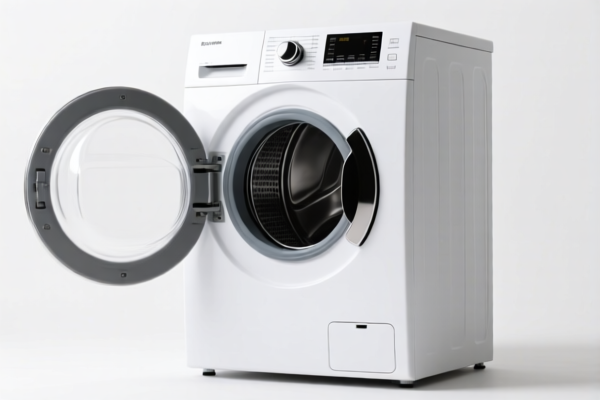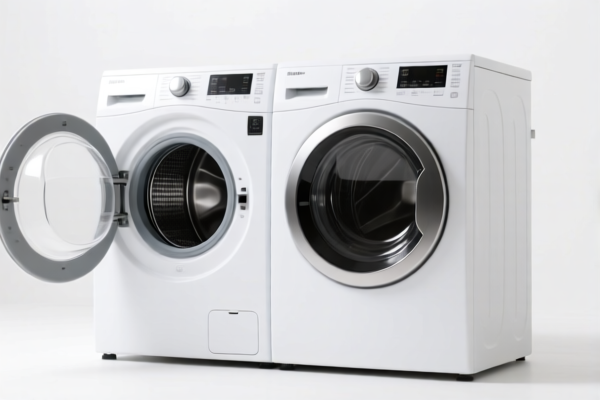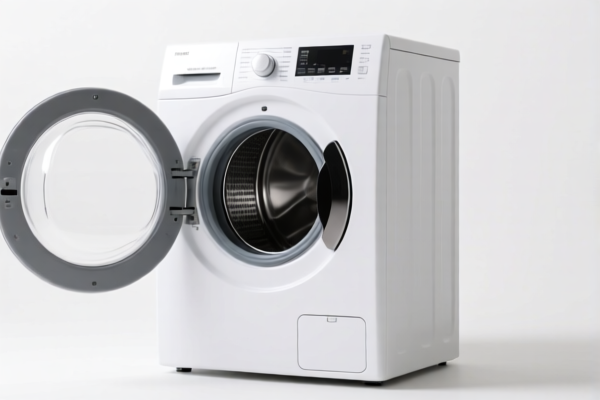| HS Code | Official Doc | Tariff Rate | Origin | Destination | Effective Date |
|---|---|---|---|---|---|
| 8450110010 | Doc | 31.4% | CN | US | 2025-05-12 |
| 8450110040 | Doc | 31.4% | CN | US | 2025-05-12 |
| 8450110080 | Doc | 31.4% | CN | US | 2025-05-12 |
| 8450120000 | Doc | 32.6% | CN | US | 2025-05-12 |
| 8450190000 | Doc | 31.8% | CN | US | 2025-05-12 |
| 8450200010 | Doc | 31.0% | CN | US | 2025-05-12 |
| 8450200040 | Doc | 31.0% | CN | US | 2025-05-12 |
| 8450200080 | Doc | 31.0% | CN | US | 2025-05-12 |
| 8450902000 | Doc | 32.6% | CN | US | 2025-05-12 |
| 8450904000 | Doc | 40.1% | CN | US | 2025-05-12 |
| 8450906000 | Doc | 32.6% | CN | US | 2025-05-12 |




Okay, let's break down the HS codes for your "ELECTRIC CLOTHES DRYER" (which appears to also include washing machines, based on the codes provided). I'll explain the classification, tax implications, and provide some important reminders.
Understanding the HS Code Structure (Chapter 84: Nuclear reactors, boilers, machinery and mechanical appliances; parts thereof)
The HS codes you've provided all fall under Chapter 84. Here's how to interpret them:
- First 2 digits (84): Indicates the Chapter – in this case, "Nuclear reactors, boilers, machinery and mechanical appliances; parts thereof."
- Next 2 digits (50): Specifies the Heading – "Household- or laundry-type washing machines, including machines which both wash and dry."
- Following digits: Further refine the classification into Subheadings and specific parts.
Detailed Breakdown of Your Codes:
Let's categorize the codes and discuss each one:
1. Washing/Drying Machines (Capacity ≤ 10kg) – 8450.11
- 8450.11.00.10: Fully automatic, coin-operated. Tax: 31.4%
- 8450.11.00.40: Fully automatic, Top Loading. Tax: 31.4%
-
8450.11.00.80: Fully automatic, Other. Tax: 31.4%
These codes cover fully automatic washing/drying machines with a dry linen capacity of 10kg or less.
2. Washing/Drying Machines (Capacity ≤ 10kg) – 8450.12
-
8450.12.00.00: Other machines with built-in centrifugal dryer. Tax: 32.6%
This code covers washing/drying machines with a dry linen capacity of 10kg or less, but are not fully automatic.
3. Washing/Drying Machines (Capacity > 10kg) – 8450.20
- 8450.20.00.10: Coin-operated. Tax: 31.0%
- 8450.20.00.40: Top Loading. Tax: 31.0%
-
8450.20.00.80: Other. Tax: 31.0%
These codes cover washing/drying machines with a dry linen capacity exceeding 10kg.
4. Parts – 8450.90
- 8450.90.20.00: Tubs and tub assemblies. Tax: 32.6%
- 8450.90.40.00: Furniture designed to receive the machines. Tax: 40.1% (Higher due to the 7.5% additional tariff)
-
8450.90.60.00: Other parts. Tax: 32.6%
These codes cover various parts used in the washing/drying machines.
Important Reminders & Considerations:
- Dry Linen Capacity is Key: The most important factor in determining the correct HS code is the dry linen capacity of the machine. Ensure you accurately classify based on this specification.
- Automatic vs. Non-Automatic: The level of automation (fully automatic, semi-automatic, or non-automatic) also impacts the HS code.
- 2025.4.2 Tariff Changes: Be aware that tariffs are scheduled to change on April 2, 2025. The "2025.4.2后加征关税" (additional tariff after April 2, 2025) will significantly increase the total tax rate for many of these codes.
- Material Composition: The material composition of the machine (e.g., stainless steel, plastic) could potentially affect the tariff rate in some cases.
- Country of Origin: The country of origin is crucial for determining applicable trade agreements and potential duty reductions.
- Certifications: Depending on the destination country, you may need to provide certifications (e.g., safety, energy efficiency) for these appliances. Please check the import regulations of the specific country you are exporting to.
- Accurate Description: Provide a detailed and accurate description of the goods on your customs declaration.
Recommendation:
To ensure accurate classification and avoid potential delays or penalties, I recommend:
- Double-check the dry linen capacity of each machine.
- Confirm the level of automation.
- Review the specific import regulations of the destination country.
- Consider consulting with a licensed customs broker in the destination country.
I hope this detailed breakdown is helpful! Let me know if you have any other questions.
Customer Reviews
The information on the parts under 8450.90 was a bit overwhelming, but overall, the page provided a solid overview of the HS codes and their implications for exporting to the US.
I found the section on the 2025.4.2 tariff changes extremely valuable. It helped me understand that my tariff rates could increase after April 2, which I hadn't considered before.
The detailed breakdown of the dry linen capacity and automation levels was really useful. I was able to classify my machines correctly based on this information.
This page has a clear breakdown of the HS codes for electric clothes dryers, including the tariff rates and classifications. The explanation of the 8450.11 and 8450.20 codes was very helpful for my import business.